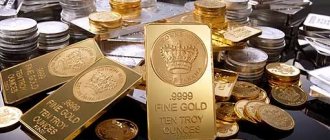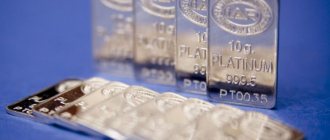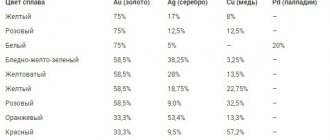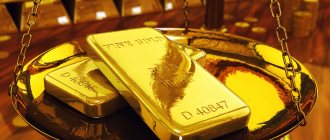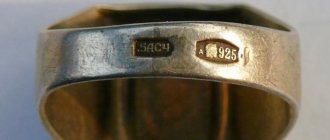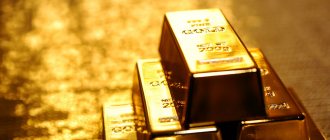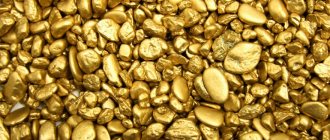Plutonium
Cost per gram: about $6,000
Plutonium is on the list of the most expensive materials on Earth. It is mainly used in nuclear reactors and in energy sources on space satellites that require long-term power supply. Plutonium is obtained from the nuclear decay of uranium, but can also be found naturally, although in very rare cases. Can be used for space travel. For example, the detectors of the Voyager 1 interplanetary station, launched in 1977, use plutonium generators, which have not failed to this day and are designed to operate normally until 2025.
Buckminsterfullerene - $150 million per gram
Image credit: Wikimedia
Buckminsterfullerene (also called Buckyball) contains 60 carbon atoms (with nitrogen atoms housed within them). Oxford University has been working on this material for more than 12 years.
This material could be used to create small and portable atomic clocks, which would be the world's most accurate form of timekeeping. Currently, atomic clocks are the size of a room. This new nanomaterial can shrink atomic clocks down to the size of a microchip and thus could be integrated into mobile phones. It can also make GPS navigation accurate to within 1 millimeter.
Taaffeit
Cost per gram: US$20,000.
An incredibly rare gemstone that was recently discovered and is a collector's dream. It has a color range from red to purple. The main source of these gemstones is in Tanzania. This gemstone is so rare that all examples discovered on earth fit in the palm of your hand.
Platinum
Gold's closest price neighbor is platinum. They have fairly similar properties, but platinum is still more valuable. Its discovery is associated with the era of great geographical discoveries. The Spaniards were the first to discover and bring platinum to Europe. Previously, this material was used only by the indigenous people of America.
This metal was not appreciated in Europe. In appearance it resembled silver, but its processing was much more complex. Therefore, it was of significantly less value than gold. Meanwhile, counterfeiters were still able to find a use for platinum.
They began to mix it with gold. After some time, the Spanish government realized what was happening, and the import of platinum into the country was banned. It was decided to flood those platinum reserves that were in the country. Now platinum is widely used in industry, as well as in jewelry.
Platinum
Tritium
Cost per gram: about 30,000 thousand US dollars.
Produced in nuclear reactors by irradiating lithium metal or lithium-containing elements. This is a superheavy type of hydrogen. Tritium is a key component in making nuclear weapons. It is used in ultra-low concentrations to produce glow-in-the-dark indicator inscriptions and applied to clock hands. The beta rays it emits are very weak and cannot harm a person. There is also a low risk to health if ingested.
Gold - $47 per gram
Gold is a dense transition metal and one of the least reactive metallic elements, often found in free elemental form. As of 2014, a total of 183,600 tons of gold are present above ground.
It is found in a wide variety of jewelry, art and decoration. In the past (before 1976), gold was used as a currency. Due to its high conductivity, it is also used in electronics. Several gold salts are used medicinally as anti-inflammatory agents. It is also used in the production of colored glass, gold leaf, dental implants and infrared protection.
Diamonds
Cost per gram: from 55,000 to 108,000 US dollars (flawless, round, clarity and color - 1, size from 5 carats)
Natural diamonds have long been valued for their beauty and extreme hardness. In fact, it is the hardest substance known on Earth, measuring 10 on the Mohs scale.
Prospects for investment in ferrous metals
Over the past six months, the situation in the ferrous metals market segment has not been stable. Statistical data and analytical reports indicate unprofitable investments in the industry around the world and give disappointing forecasts. Competition is growing, prices are falling, and company profitability is decreasing. This is where the risks associated with such investments arise. The prospects for high profitability here are extremely doubtful.
Many states today are reducing the production of ferrous metals. Even China is facing a significant decline in demand and a financial and investment crisis in the iron and steel industry.
In nine countries leading in the production of ferrous metals, annual production decreased by between 1% and 10%. In countries such as Italy, Brazil, South Korea, the USA, Japan, Turkey, Germany, Russia, India and China, this indicator has already become negative.
Americium
Cost per gram: US$140,000.
Americium is a radioactive metal used in small quantities in smoke detectors. First synthesized in 1944. The physical and chemical properties of americium are close to those of plutonium. Fresh americium is glow-in-the-dark, shiny, and quickly fades when opened. Considered toxic due to its radioactivity.
Lysergic acid diethylamide - $2,500 per gram
Lysergic acid diethylamide (commonly known as LSD) is a semi-synthetic drug derived from an inorganic chemical called diethylamide, a fungus that grows on certain grains and ergots. It is sensitive to ultraviolet radiation, chlorine and oxygen.
The effects of LSD are unpredictable. The user may experience changes in mood, different emotions, and visual hallucinations. Physical effects include weakness, hypothermia, insomnia, tremors, goosebumps, increased heart rate and blood sugar levels.
Painite
Cost per gram: from 9,000 to 300,000 US dollars.
It was first discovered in Burma in 1950 by British gem dealer Arthur S. D. Payne. Deposits suspected to contain painite have recently been found in the Mokok region of Myanmar. Regardless of price, they are in great demand.
Regolith
Cost per gram: US$500,000.
According to the Americans, about 400 kg of lunar soil is stored at NASA. Such weight could only be delivered to the ground using the efforts of astronauts. Skeptics question the fact that humans have visited the moon. A small amount of lunar soil is stored and studied in several countries that participated in space expeditions to the moon.
Methamphetamine - $90 per gram.
You may be familiar with this drug, especially if you've watched Bad Condition. It is the most addictive illegal drug that causes adverse changes in brain structure and function and can damage neurons in the central nervous system.
In the United States, methamphetamine hydrochloride is used to treat obesity and ADHD in children and adults. It is sometimes prescribed off-label for idiopathic hypersomnia and narcolepsy. However, overdose may result in high/low blood pressure, painful urination, overreactive reflexes, abnormal heart rate, tremors, and muscle pain.
Californium
Cost per gram: US$10 million to US$27 million
Scientists create californium by bombarding curium with alpha particles. This reaction creates the radioactive chemical element with atomic number 98. There are currently ten known isotopes of californium.
Helps treat certain forms of cancer; reveals the gold and silver content in ores, as well as the residual volume of oil in depleted deposits. Can only be created in an industrial laboratory manner.
Besides gold and platinum: top 5 most expensive metals and where they are mined
Iridium
Iridium is a chemical element with atomic number 77 in the periodic table of chemical elements. It is one of the rarest metals in the earth's crust, with annual production of only three tons. The density of iridium is comparable to osmium. In addition, it is the most corrosion-resistant metal element, resistant to air, water, salts and acids.
The history of the discovery of this substance is somewhat prosaic. Iridium was discovered along with osmium during the process of obtaining platinum by refining. The scientist who made this discovery, Tennant, was delighted with the beauty of the picture created by Iridium salts - the “rainbow”. This is how the name of this chemical element was born.
Pure metal is not toxic, but is capable of reacting to form toxic substances, for example, IrF6 fluoride.
- What is the price?
Iridium, one of the rarest precious metals found as a byproduct of platinum and palladium mining, has risen in price by 131% since the beginning of this year, Bloomberg reports. That's much more than Bitcoin, which has risen 85% since January.
Now iridium costs three times more than gold - $6,000 per ounce. It is used to produce premium spark plugs and in electronics. The price of the metal is rising due to supply disruptions last year and strong demand.
Due to the sharp rise in price, iridium has become an attractive asset for investors, the agency notes. However, buying it is not so easy - the metal is not traded on an exchange or through exchange-traded funds. Investors have to contact producers directly and buy iridium in ingots or repurchase it at a higher price.
Along with iridium, demand for other rare platinum group metals has also increased.
Like other PGMs, iridium is mined as a by-product of nickel production. The largest iridium deposits are located in South Africa and Russia.
- How is it used?
Because of its hardness, iridium is difficult to transform into usable parts. However, those characteristics that make it difficult to work with make it a valuable additive for strengthening alloys. Although it is a catalytic metal, its high melting point and resistance to corrosion make iridium the material of choice for crucibles.
When found in nature, the chemical element Ir is accompanied by its natural isotopes. These are stable 191 and 193. However, there is a whole network of synthesized isotopes that have a short half-life. Of these, the most notable is the relatively stable (lifetime 241 years) Iridium 192, which has an isomer Ir 192 with a half-life of 74 days.
The first of them can act as a source of electricity. The second is used as an indicator of the quality of welds. Gamma flaw detectors are equipped with isotope 192.
Since the metal's strength is comparable to its companion Osmium, the material can replace the latter in almost all areas. It is used for the manufacture of thermocouples, fuel tanks, thermoelectric generators.
The alloy of platinum and Ir, even without copper, is known for its high strength; talk that it was previously used to make nibs for pens is true, but similar products were made from an alloy of platinum and osmium. Unlike the latter, iridium is happily used for alloys with platinum by jewelers. Although it is refractory, it still allows you to obtain the necessary forms and put a mark.
Primary deposits of osmic iridium are located mainly in peridotite serpentinites of folded regions (South Africa, Canada, Russia, USA, New Guinea).
Rhodium
Rhodium is relatively unknown to people outside the metallurgical industry.
Rhodium (Rh) is an element of the ninth group (in the old system - a side subgroup of the eighth group) of the fifth period of the periodic table of chemical elements, atomic number - 45. The simple substance rhodium is a solid transition metal of a silvery-white color. A noble metal of the platinum group.
Discovered in England in 1803 by William Hyde Wollaston while working with native platinum. In 1804, William Wollaston reported to the Royal Society that he had discovered new previously unknown metals - palladium and rhodium - in platinum ore from South America. In an effort to purify the “raw” platinum isolated from ore from impurities of gold and mercury, he dissolved it in aqua regia and then precipitated it from the solution with ammonia. The remaining solution had a pink tint, which could not be explained by the presence of then-known impurities. The addition of zinc to this solution resulted in the formation of a black precipitate, which included other metals such as copper, lead, palladium and rhodium. Dilute nitric acid dissolved everything except palladium and rhodium.
- What is the price?
Now the price of rhodium is 68,573 rubles per gram.
Part of the reason for the metal's high price is its rarity. The annual production of rhodium is about 30 tons. By comparison, gold mining companies excavate between 2,500 and 3,000 tons of the precious metal annually. With stricter emissions regulations in major countries including China and India, platinum group metal (PGM) miners are expecting good times for rhodium.
Author: Alchemist-hp (talk) www.pse-mendelejew.dederivative work: Purpy Pupple (talk) - own work, CC BY-SA 3.0
It is worth noting that rhodium is subject to the largest price fluctuations of all precious metals - its price has changed hundreds of times over the past half century. In February 2006, rhodium prices reached a record high of $3,500 per troy ounce. In January 2008, rhodium prices set a new record of $7,000 per ounce. After peaking at $10,100 per ounce, the price of rhodium fell to $900 at the end of November 2008 due to the crisis in the automotive industry. On November 19, 2009, the price of the metal rose to $2,600 per ounce.
As of September 2015, the average price for rhodium is $756.67 per ounce.
The lowest price in recent years for rhodium was observed in August 2016 and amounted to $625 per ounce, after which the price of the metal has been steadily growing. At the end of January 2021, the price reached a record $10,165 ounce. On February 20, 2021, the price per ounce exceeded $20 thousand. At the end of March, rhodium reached a record $29.8 thousand per ounce.
- How is it used?
Rhodium is used in catalytic converters, which are part of automobile exhaust systems. According to S&P Global Platts, nearly 80% of the demand for rhodium and palladium comes from the global automotive industry. 80% of all rhodium is mined in South Africa. Rhodium is also used as a catalyst in various reactions, for example, in the production of acetic acid from methyl alcohol. And an alloy of rhodium with platinum is a very effective catalyst for the production of nitric acid by the oxidation of ammonia with air; there is no economically justified alternative to its use.
Rhodium detectors are also used in nuclear reactors to measure neutron flux.
In the production of glass products (platinum-rhodium alloy is used in the manufacture of dies for drawing glass filaments), as well as liquid crystal screens. Due to the growth in the production of liquid crystal devices, the consumption of rhodium is growing rapidly: in 2003, 0.81 tons of rhodium were used in glass production, in 2005 - 1.55 tons of rhodium.
Rhodium metal is used to produce mirrors for high-power laser systems that are subject to intense heating (for example, hydrogen fluoride lasers), as well as for the production of diffraction gratings for devices for analyzing matter - spectrometers.
Platinum-rhodium alloy crucibles are used in laboratory research and also for growing some gemstones and electro-optical crystals.
The largest producer of rhodium is the Republic of South Africa - it accounts for 80% of production. This precious metal is also mined in Zimbabwe, North America, Russia and other countries.
Palladium
Palladium is a chemical element with atomic number 46. It belongs to the 10th group of the periodic table of chemical elements (according to the outdated short form of the periodic system, it belongs to a secondary subgroup of group VIII, or group VIIIB), and is located in the fifth period of the table. The atomic mass of the element is 106.42(1) a. e.m. Denoted by the symbol Pd.
Author: Juri
The element belongs to the transition metals and noble metals of the platinum group (light platinoids). The simple substance palladium under normal conditions is a ductile metal of silvery-white color.
- What is the price?
Now the price of palladium is only growing and amounts to 6,415 rubles per gram.
Palladium is the most expensive of the four main precious metals: gold, silver and platinum. It is less common than platinum and is used in large quantities in catalytic converters.
The Russian miner is the world's largest palladium miner, producing 86 metric tons in 2021.
- How is it used?
Palladium is needed most in the automotive industry. Like platinum, this metal is used in catalytic converters (catalysts), which convert harmful hydrocarbons, nitrogen oxides and other chemical compounds contained in exhaust gases into relatively harmless carbon monoxide and water vapor. In fact, palladium and platinum act like a sponge, absorbing hydrocarbons. Palladium is capable of absorbing 900 times its own weight in exhaust.
Platinum is used in catalysts for diesel cars, palladium in gasoline ones. The main demand in Europe since the 1990s has been for diesel engines, as they are more environmentally friendly.
Accordingly, platinum autocatalysts were more in demand than palladium ones, which was reflected in the market price of metals: platinum cost about a thousand dollars per ounce, palladium - about 200.
Medical instruments, parts of pacemakers, and dentures are made from palladium and its alloys. In some countries, a small amount of palladium is used to obtain cytostatic drugs - in the form of complex compounds, similar to cis-platinum. Beta-active palladium-103 is used for brachytherapy in the treatment of cancer.
The largest palladium deposit is located in Russia (Norilsk, Talnakh). Deposits are also known in the Transvaal (South Africa), Canada, Alaska, Australia, and Colombia. Supplies of palladium in the world in 2007 amounted to 267 tons (including Russia - 141 tons, South Africa - 86 tons, USA and Canada - 31 tons, other countries - 9 tons).
Gold
Gold (Au from the Latin Aurum) is an element of group 11, the sixth period of the periodic table of chemical elements, with atomic number 79. The simple substance gold is a noble metal of yellow color.
Part durability, part tradition, gold is one of the most versatile commodities. Primarily used in jewelry, but also has important applications in electronics and aerospace due to its strength and conductivity. Simply put, gold is used everywhere.
- How is it used?
In the modern world, gold is used not only as a precious metal to provide currency and create expensive jewelry. Gold is also an important raw material that is used in many industrial sectors. At the same time, the demand for industrial gold is several hundred tons per year.
The main consumer of gold is the electronics industry, which uses it in electronic components for computers and mobile phones. And the electronics sector's gold consumption is only expected to increase, fueled by the growth of the electronic components industry.
Next in gold consumption is dentistry; many dentures and crowns contain this material, but now the market for dental gold is on the contrary declining. This is due to the fact that more reliable and modern materials are now used, the quality of which is superior to gold products.
Author: Periodictableru - own work (www.periodictable.ru), CC BY 3.0
The chemical industry is in third place in the use of gold; it is used to apply protective coatings to chemical equipment, which prevents the formation of corrosion. It is also used as a catalyst in many chemical reactions.
In last place is the use of gold in small industry and household consumption: applying protective coatings, gilding watch cases, making fabrics with gold threads, creating special types of glass, etc.
The uses of gold are very extensive. The areas of its use include spacecraft engines, gold jewelry, any electronics, fabrics, glass, chemistry, medicine and much more. Gold as a precious metal has retained its investment, industrial, jewelry and medical purposes for several millennia. This trend is unlikely to be interrupted in the future; the properties of the yellow metal will always be used by scientists, expanding the boundaries of its modern use.
- What is the price?
Now the price of gold is 4,208 rubles per gram.
Of course, the stereotype of gold as a prestigious and valuable metal did not arise out of nowhere. When Spanish explorers first traveled to the “New World” of America, they encountered an indigenous culture that lived completely different lives and spoke different languages. But both cultures had one thing in common; both valued gold highly. Almost every society has used it as currency and a symbol of wealth, prestige or power, and the modern world is no exception. Whether it's wedding rings, awards or even money, few substances occupy as important a place in our lives as gold.
Until the 1970s, South Africa was the dominant gold producer, but production has declined since then. At its peak in 1970, it produced 32 million ounces of gold, accounting for two-thirds of global production of the metal. Today, China, Australia and Russia are among the three leaders in its production.
Platinum
Platinum is a chemical element of the 10th group, 6th period of the periodic table of chemical elements with atomic number 78; shiny noble metal of silver-white color.
- How is it used?
Platinum is primarily used in catalytic converters for diesel vehicles—45% of platinum sold in 2014 went to the automotive industry.
Everyone knows that platinum is used to create jewelry, because the metal has high levels of hardness and ductility. In addition, platinum products delight with their appearance: silver color and characteristic shine make jewelry very popular among buyers.
Until the middle of the last century, only a few percent of the mined precious metal was allocated for the medical field. But today the situation has changed, and the demand for platinum is growing exponentially. This is most likely due to the development of research that has revealed the advantages of platinum over other metals.
Today, platinum is needed in the following areas of life:
- space industry
; - medicine
; - electrical engineering
; - glass industry
; - production of aircraft and ships
; - chemical industry
.
Platinum has also been used in banking. This precious metal is an investment item: ingots are cast from it.
Platinum is needed in the production of nitric acid
and other chemicals. In this case, the element acts as a catalyst, accelerating reactions that are too slow. For this purpose, they do not use pure platinum, but its alloy with rhodium. Otherwise, the production of the substances would be too expensive.
The metal also plays the role of a catalyst in oil refining. With its help, gasoline is produced from oil. And if platinum is used in the form of a grid to create nitric acid, then powder is made from it for use in oil processing. Of course, you can use other catalysts, such as aluminum or molybdenum, but platinum is more durable and efficient.
Author: Periodictableru - own work, CC BY 3.0
Use of platinum in electrical engineering
due to stable electrical and mechanical properties. The material conducts current well and also has a decent thermal conductivity. Typically, platinum alloys are used to make contacts, and combining platinum with cobalt makes it possible to create powerful magnets.
Application of platinum in the medical industry
helps save the lives of thousands of sick people. The fact is that there are simply no analogues to this material. Products made from other metals are not resistant to oxidation and are therefore not suitable for such a reaction.
In the field, platinum instruments are sterilized in the flame of an alcohol burner.
Platinum is also often used to create implants for people with hearing impairments. In addition, there is an opinion that this material helps fight cancer. Many drugs are made based on this metal to help people overcome cancer.
- What is the price?
Now the price of gold is 2,827 rubles per gram.
Platinum has traditionally sold for a higher price than gold, and coupled with its rarity compared to gold, "platinum" as an adjective has come to be associated with a higher level of prestige than gold. Despite the problems with platinum and gold, which is now trading above it, this reputation remains.
In total, the world produces an average of about 2,500 tons of gold per year. The largest amount of gold in the world is mined in South Africa. This is followed by China, Australia, the USA, Peru, Russia (in sixth place), Canada, Mali, Uzbekistan, and Ghana. In 2010, more than 450 tons of gold were used in the world for technical purposes.
Read more
Ideal conditions for the origin of life have been found on Saturn's moon
Oxygen will definitely disappear: what will happen to the Earth without the main source of life
Physicists have created an analogue of a black hole and confirmed Hawking's theory. Where it leads?
Troy ounce is a unit of mass equal to 31.1034768 grams.
Antimatter
Cost per gram: US$62.5 trillion to US$100 trillion
Antimatter is by far the most expensive material on Earth. Very small quantities have been produced through scientific experiments, but there is currently no way to store it. This requires very sophisticated technology being developed at CERN (International Organization for Research in Nuclear Physics). Today, a gram of antimatter is estimated at about 80 trillion. US dollars.
So, these are the ten most expensive materials on Earth. Prices will change over time. As new sources are discovered or production costs change, new expensive substances will appear. For man-made substances, official prices are very difficult to fix.
What precious material will you choose in order to reliably preserve your savings?
Your favorite precious metal is still gold, because you are sure that gold is the best equivalent of money, right?
Antimatter - $62.5 trillion per gram (NASA estimates)
First positron ever observed
Antimatter is a material composed of antiparticles that has the same mass as particles of ordinary matter but opposite charges. Creating 1 gram of antimatter would require 25 million billion kilowatt-hours of energy.
When antimatter particles interact with matter particles, they destroy each other and produce enormous amounts of energy. This could be used as fuel for interplanetary or interstellar travel. In addition, matter-antimatter reactions have practical applications in medical imaging, such as positron emission tomography.
Tags
Antimatter
